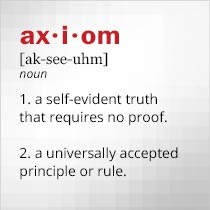Make Sure EVs and HEVs Are Good for Every Mile
July 07, 2020
 |
Electric vehicles (EVs) and hybrid electric vehicles (HEVs) are gaining in popularity as they improve in performance. Contributing to the growing numbers of EVs and HEVs on the roads are increasing comfort levels for drivers dealing with vehicles powered by electric motors. Manufacturers of EVs and HEVs are making it simpler and more convenient to maintain adequate electric charge levels to keep their vehicles running for longer distances on electric power, enticing more drivers to try these environmentally friendly vehicles. Of course, testing the electrical motors, systems, and their components is an important part of ensuring that every EV and HEV has the longest running times and operating lifetimes possible, and that involves understanding what needs to be tested and how to perform the proper measurements.
As noted in an earlier blog on EVs and HEVs, “Making Measurements That Keep EVs and HEVs On the Road”, the growing trend of electrification in vehicle powertrains is supporting a healthier environment with lower carbon dioxide emissions. The electrification relies on efficient motors, high-power subsystems, circuits, and components, and high-voltage batteries (in addition to the standard 12-V vehicle batteries that support the internal-combustion engine in an HEV). One of the challenges for suppliers of these EV and HEV components is achieving the power levels needed to drive the electric powertrain to sufficient speeds without adding significant size and weight, a characteristic known as high power density.
At present, EVs are designed for much shorter driving distances than HEVs (typically about 20 to 25 miles for “around-town” driving), relying entirely on their electric traction motors and electric energy stored in a high-voltage lithium-ion (Li-ion) battery for propulsion.
An HEV includes an internal-combustion engine powered by gasoline and switches to it when it runs out of electric energy, providing it with a much longer driving range than an EV, as much as 400 miles for the combination of the electric motor and the internal combustion engine.
With its dedication to full electric power, an EV typically relies on a higher-voltage battery system than an HEV, as much as 400 V, and maintaining the high-voltage battery pack and electric powertrain system in an EV is critical for vehicle reliability because the lack of a “backup” internal-combustion engine. The high-voltage battery in an EV can be charged from different power sources: at a home charging station operating on the electric power “grid” or at an available public charging station.
An HEV does not perform charging of the electric motor’s battery from an outside power source such as a charging station. Rather, it uses the internal-combustion engine as a generator or with a generator to produce the energy needed to recharge the electric motor’s high-voltage battery. An HEV also has the option of regenerative braking to recharge the electric motor battery, converting kinetic energy to electric power with the help of the vehicle’s electric motor being used as a generator during the braking or slowing process. In some cases, an HEV may even draw energy from the standard onboard 12-V vehicle battery and convert it to the higher voltage needed to recharge the electric motor battery. In recent years, a third type of electric vehicle, a plug-in HEV (PHEV), has gained in popularity by combining the extended driving range of an HEV with the convenience of plug-in charging of the electric drive system.
As EVs and PHEVs and their battery systems evolve, it is important to note how charging techniques are changing. Especially at public charging stations where EVs and PHEVs are competing with the short “fill-up” times of internal-combustion engines at gas stations, attempts are being made to shorten the charging times if EV and PHEV batteries and extend their driving ranges. Various fast-charging approaches are being explored, typically using high-voltage charging stations that may supply 240 VAC rather than 120 VAC energy for recharging. To support such fast-charging techniques, the vehicles on-board charging circuitry must be equipped with high-voltage inverters to handle the elevated voltages used for faster charging rates.
Probing the Power
Testing the electric powertrain of an EV, HEV, or PHEV requires a readiness to perform measurements on many different types of components since the voltages, currents, and power levels can vary widely from charge connector to the electric motor and transmission. Many different types of electric motors are used in EVs, HEVs, and PHEVs, both DC and AC units which, in turn, are supported by many different types of power supplies. Electric motors are typically specified for high starting torque, high power density, and high efficiency. DC motors are available with and without brushes and capable of high starting torque. AC motors may lack the starting torque of a DC motor and require complex inverter-based power supplies but can typically provide much higher efficiency than a DC motor in the powertrain of an EV, HEV, or PHEV.
Power flows through an electric vehicle’s powertrain in many different series and parallel configurations. Power conversion is routinely performed during the operation of any EV, HEV, or PHEV, with three different types of power supplies: AC/DC rectifier, DC/DC converter, and DC/AC inverter supplies. They are part of vehicle’s electric powertrain and must be tested at different operating levels to ascertain performance. Whether an EV, HEV, or PHEV is in development, on the production line, or scheduled for routine maintenance, its electric powertrain must be tested to ensure optimum operation. This requires different test instruments, from battery testers to electric motor power monitors.
Few test solutions can provide a more exhaustive look at an electric vehicle’s powertrain than the Keysight 34972A data acquisition/switch system. It is a full-featured digital multimeter (DMM) but so much more, with modules available for high-speed switching, data acquisition, and monitoring environmental factors such as temperature. The system can be controlled via a personal computer (PC) with almost any interface, including RS-232, GPIB, and USB interconnections. The system is capable of measuring and processing most of the signals found in an electric vehicle, including AC and DC voltage, AC and DC current, resistance, frequency, and temperature, with 6.5 digits of resolution with 0.004% DC voltage measurement accuracy.
When the performance of an electric motor is a concern, such as measuring its torque, the Fluke 438-II Power Quality and Motor Analyzer is a compact handheld instrument that can provide a complete analysis of the mechanical and electrical performance parameters of the electric motor in an EV, HEV, or PHEV. It provides wide-range measurements of mechanical power (to 746 kW), torque, efficiency, revolutions per minute (rpm), and harmonics using three-phase current and voltage waveforms from the electric motor for the measurements.
Checking the battery and charging system
When it is time to check the battery and its charging system in an EV, HEV, or PHEV, the Chroma 17216M-10-6 battery charge/discharge test system is designed specifically for testing the Li-ion batteries and high-power capacitors used in electric vehicle powertrains. The system uses plug-in modules to achieve many different channels and test configurations as needed and can perform battery cell charge/discharge system and can perform charge and discharge testing of both batteries and capacitors, battery capacity testing, battery life-cycle testing, DC internal resistance (DCIR) testing of capacitors, and hybrid pulse power characterization (HPPC) testing per the U.S. Department of Energy (DoE).
Another powerful option for checking EV, HEV, and PHEV batteries is the NH Research 9200-4904 battery test system, a full-sized but full-featured modular test system for life-cycle testing and characterization of Li-ion battery packs and modules. By adding modules, it can handle directional DC voltages to 600 V and power levels to 252 kW. This versatile test system is well suited for testing all battery chemistries, including lead-acid and nickel-cadmium (Ni-Cd) batteries as well as the Li-ion batteries in EVs, HEVs, and PHEVs. It includes comprehensive software with burn-in and battery emulation test functions.
Powertrain testing
For general EV, HEV, and PHEV powertrain testing, power supplies and precision loads are always handy and Chroma’s 63206A-150-600 DC load has a range of 0 to 150V while Chroma’s 62024P-100-50 DC power supply can deliver as much as 100V DC and 2400W power. Kikusui’s PLZ6000R is a compact regenerative DC electronic load well suited for battery discharge testing and checking different types of power supplies and DC/DC converters. For detecting and displaying current and voltage waveforms, the Yokogawa DL850EV ScopeCorder is a portable data-acquisition recorder that can be used to capture data on voltage, current, temperature, acceleration, and vibration. It is well suited for short-term and long-term testing of motors and inverters in EVs, HEVs, and PHEVs.
An evolving state
A future Axiom Test Equipment blog will explore the evolving state of EVs, HEVs, and PHEVs and what different technology advances mean to testing requirements. Fast charging, for example, is enabling longer driving distances for the electric powertrain while trimming charging times. But the faster charging is occurring at higher voltages than previously, requiring battery and charger testers with suitable maximum limits. Power supplies and batteries, even fuel cells, are being developed for higher power densities, but that also means greater thermal management challenges for the powertrain and the vehicle design.
These are a few examples of the developments taking place now to improve EV, HEV, and PHEV performance, just as the test equipment presented above are just a few examples of the many test solutions available for EV, HEV, and PHEV testing from Axiom Test Equipment. If you would like more info on any of these units or others, browse our inventory, or contact our sales department at sales@axiomtest.com, or by calling an Axiom account manager at 760-806-6600. For more EV's resources and equipment used in EV Testing visit our EV / HEV industry page.
Back to BLOG








